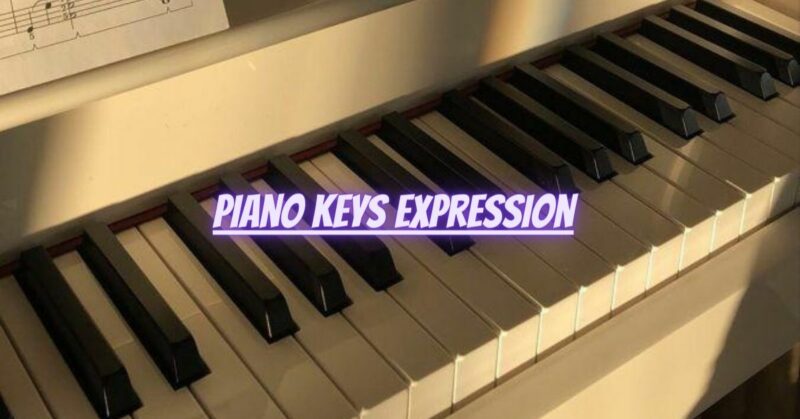Piano keys expression is the art of infusing life and emotion into every note played on the piano. It goes beyond mere technical execution and delves into the realm of heartfelt communication through music. As a pianist, mastering piano keys expression is essential for creating captivating and soul-stirring performances that resonate deeply with audiences. In this article, we will explore the significance of piano keys expression, understanding its components, and how it enriches the musical experience.
1. The Soul of Music:
Piano keys expression is the soul of music. It allows the pianist to convey emotions, tell stories, and evoke powerful feelings through their playing. Every note becomes a vehicle for communication.
2. Dynamics and Volume:
One of the essential elements of piano keys expression is dynamics—the variation in volume from soft to loud. Understanding and utilizing dynamics bring depth and texture to the music, shaping its emotional impact.
3. Tempo and Rubato:
The manipulation of tempo, known as rubato, is another key aspect of piano keys expression. It allows the pianist to stretch or compress time subtly, adding a personal touch and emphasizing certain phrases.
4. Articulation and Phrasing:
Articulation and phrasing play a significant role in piano keys expression. Deciding when to use legato, staccato, or tenuto and shaping musical phrases contribute to the overall character and storytelling.
5. Nuances and Colors:
A skilled pianist explores the nuances of sound and color on the piano keys. They create subtle variations in touch, tone, and timbre, enhancing the music’s emotional richness.
6. Connecting with the Music:
Piano keys expression involves a deep connection with the music. It requires the pianist to immerse themselves in the piece, understanding its context, and finding personal connections to bring out its essence.
7. Embracing Silence:
Piano keys expression is not only about playing the notes but also embracing moments of silence. Rests and pauses are as important as the sound, allowing for reflection and anticipation.
8. Emotional Resonance:
Piano keys expression elicits emotional resonance in both the performer and the audience. It creates a profound connection, transcending the boundaries of language.
9. Empathy and Empowerment:
Through piano keys expression, pianists have the power to evoke empathy in listeners, bringing them on an emotional journey. It is a way to empower and uplift the spirits of those who hear the music.
10. Personal Interpretation:
Ultimately, piano keys expression is about personal interpretation and authenticity. No two pianists will interpret a piece in the same way, making each performance unique and deeply meaningful.
Conclusion:
Piano keys expression is the heart and soul of a pianist’s artistry. It allows them to transcend the technicalities of playing and communicate directly with the listener’s emotions. By exploring dynamics, tempo, articulation, and nuances, pianists can paint a vivid musical canvas that speaks volumes without words. Embrace the language of piano keys expression, and let it be the conduit through which your music touches hearts, stirs emotions, and leaves an indelible mark on the world. As you dive into the depths of piano keys expression, embrace the magic of music and let it be the language that speaks to the soul. Happy playing!


